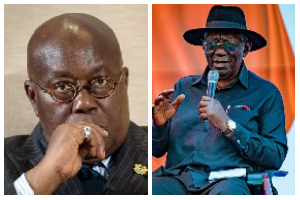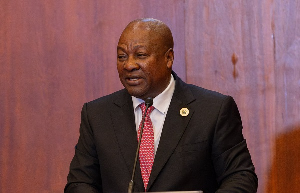After maintaining a largely laid-back stance over the ongoing constitutional reforms debate in Kenya in the past one and half years, President Uhuru Kenyatta had a rather busy January trying to lay the law to a faction within the ruling Jubilee Party opposed to his closeness with opposition leader Raila Odinga.
Mr Kenyatta and Mr Odinga, bitter rivals in the last two disputed presidential elections, initiated the reforms process following their surprise truce, popular as the ‘Handshake’, on March 9, 2018.
The two leaders have sought to sell their agenda under the Building Bridges Initiative (BBI) as some sort of the silver bullet for ending the ethnic violence that has perennially blighted elections.
But the fact that the BBI has also raised Mr Odinga’s profile a notch, including giving him some undefined role in government, has unsettled a section of politicians in the ruling party who see him as supplanting Deputy President William Ruto in the race to succeed Mr Kenyatta in 2022.
OPEN REBELLION
The President has in the past sought to stay above the fray, maintaining everyone was free to express his or her view on the reform agenda.
In recent months though what initially passed for opposition to Mr Odinga and BBI appeared to boil over into an open rebellion against Mr Kenyatta and his administration.
Of more concern to Mr Kenyatta, the epicentre of the revolt emerged right in his traditional political base in central Kenya and parts of Rift Valley.
In the October 2017 repeat presidential election boycotted by Mr Odinga’s supporters, the votes from the two regions together with Nairobi accounted for about 80 per cent of Mr Kenyatta’s tally.
The party dissenters couldn’t have chosen a better time to take on the President.
An economic downturn in the past two years has put pressure on small business people and farmers across the country amid a cash crunch and low farm produce prices.
In central Kenya, where many households rely on farming income, the pro-Ruto faction has had a field day blaming Mr Kenyatta for the local people’s woes and stoking grievance against his administration.
RUTHLESS PURGE
To try to fend off the rebellion, Mr Kenyatta in January embarked on a stick and carrot plan meant to isolate and tame individual dissenters while pacifying the general population.
On the same day he announced a generous economic stimulus package, including subsidies for coffee and dairy farming, he also fired Mwangi Kiunjuri as the Cabinet minister for Agriculture.
Mr Kiunjuri, an ambitious politician who has in the past represented Laikipia East Constituency in Parliament for three terms, is thought to be a prospective running mate for Mr Ruto in 2022.
The latest victim of Mr Kenyatta’s ruthless purge on party rebels is Ferdinand Waititu, the governor of Kiambu County who was impeached on Wednesday by the Senate for abuse of office.
By the time of his impeachment Mr Waititu, the burly politician who initially boosted his profile hurling stones at slum land grabbers as the MP of Nairobi’s Embakasi Constituency, was already a widely unpopular figure in the county, blamed for graft and dispossessing a widow.
A court order banned him from setting foot in the governor’s office due to corruption charges.
JUBILEE FAULT LINES
But his troubles at the Senate have been linked to the falling-out within the ruling party that has seen the faction loyal to Mr Ruto disparage his boss at public rallies.
The Waititu impeachment magnified the fault lines in Jubilee and the post-Handshake realignments.
Senators allied to the president voting with the opposition to remove the governor from office and the pro-Ruto group losing the battle to save him.
Mr Kenyatta will no doubt be hoping that the shock waves of Waititu’s fall in Kiambu reverberate far and wide in his traditional political base in central Kenya and parts of Rift Valley.
The fierceness with which the president has come out to shield the BBI from the dissenters also suggests that he is staking his second-term legacy on constitutional reforms.
EXPANDED EXECUTIVE
In mid-January, he decreed the extension of the term of the task force appointed in May 2018 to steer the reforms by another six months to June 30.
The team, originally named the Building Bridges Initiative task force, handed its report to Mr Kenyatta last November, recommending an expanded executive that makes it possible to accommodate a few more of the country’s influential political elites in power.
A key proposal in the first the Building Bridges Initiative report is the creation of the post of the prime minister and the appointment of Cabinet ministers from among MPs.
The final document could extend the power structure to include deputy prime ministers and 14 regional governors amid concerns in some quarters that the task force did not go far enough the last time out.
It is widely expected that the latest process will culminate in a constitutional referendum later this year, with Mr Kenyatta leading the ‘Yes’ campaign.
The pro-Kenyatta teams have already presided over mammoth rallies in the three counties of Kisii, Kakamega and Mombasa. More are planned countrywide since almost all county governors appear to have thrown their lot behind the Uhuru-Raila reform train.
However, what stands out are elements of the pro-Ruto brigade seeming to fall back on their initial hard-line positions.
Factions of it have held press conferences vowing to fall in line and back the BBI by taking part in the scheduled rallies. Yet others propose calling separate rallies to publicly express their fealty to the BBI.
File Image caption: President Uhuru Kenyatta and opposition leader Raila Odinga, bitter rivals in the last two disputed presidential elections, initiated a surprise truce, popularly known as the ‘Handshake’, on March 9, 2018. PHOTO | AFP
Africa News of Sunday, 2 February 2020
Source: theeastafrican.co.ke
President Kenyatta whips out the cane to tame reform rebels
Entertainment












